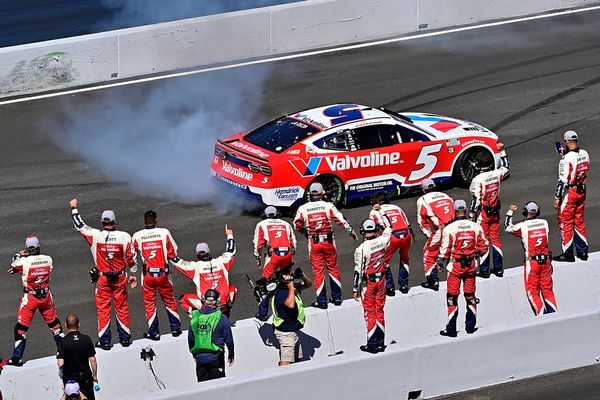SACRAMENTO, Calif. — One surefire formula for making clean energy is lots of sun and less hay.
Or fewer tomatoes and — heaven forbid — a reduction in almonds.
Plow over some San Joaquin Valley croplands and plant solar panels. Turn alfalfa fields and nut orchards into solar farms.
That would have a double benefit. Besides producing carbon-free electricity, it would save lots of scarce irrigation water. And it would keep the valley's abused aquifers from dropping further, drying up wells and sinking land while cracking canals and bridges.
Agriculture uses 80% of our developed water in California. And the lifeblood of food production has become less reliable as carbon-induced climate change alters storm patterns and reduces the Sierra snowpack.
But we need all that agriculture to feed ourselves and much of the nation, right? No, not entirely. A lot of that food — especially the almonds and pistachios — gets shipped to foreign countries, mainly in Asia. So, that means we're also exporting our scarce water.
The nonpartisan Public Policy Institute of California published a blog post last week that tied the concepts of clean energy and water conservation neatly together.
"The San Joaquin Valley is facing a monumental shift in land use over the next two decades," wrote PPIC water experts Andrew Ayres and Curtis Seymour.
"Promoting solar expansion on fallowed farmland … could support two major objectives at once: the state's clean energy goals while easing the economic pain of transitioning some land away from agriculture."
"Two important but seemingly unrelated [state] laws are driving the change," they noted.
One is the 2014 Sustainable Groundwater Management Act aimed at bringing groundwater basins into balance by the early 2040s. For decades, farmers have been pumping out a lot more water than could be naturally replenished.
Farmers "who think they're going to get more [aquifer] recharge from surface water that no one else is using are overly optimistic," Ayres told me.
"Some farmers have been irrigating crops entirely with groundwater. In the future, many will not be able to do that."
It's estimated that at least 500,000 acres of San Joaquin Valley farmland will be fallowed to comply with the groundwater law.
"Land is coming out of production," Ayres says. "The next question is, 'What do you do with it then?' Just allow that land to become unproductive? Kicking up dust or growing weeds and not contributing to the economic vitality of the valley? Solar could cover up to 40% of the land.
"And solar is very profitable. As a crop, it has a very good return — on a par with some high-value tree crops. If not more profitable."
The second law driving the land use change requires California electricity to be generated 100% by renewable energy by 2045. Solar, wind, geothermal, hydro — not natural gas.
"California has set itself a Herculean task," the PPIC blog post noted. "We're going to need a sustained, unprecedented build-out of renewables. Solar will be an important part."
There already is some solar farming in the valley — producing three gigawatts, PPIC reported. An additional 20 gigawatts — or 20,000 megawatts — have been proposed.
But there's a very big hitch. There isn't enough electric grid capacity to transmit much more solar to consumers.
"The problem is just going to get worse unless there are big investments to bring transmission capacity to the valley," Ayres says.
"Ultimately, we're going to require … a huge investment in the grid to get that solar out around the state…. There's a real question whether that's going to be possible."
Big investments mean many billions of dollars.
It's a handy coincidence that the federal government has billions to help if California can get on the ball and make a pitch for it. The $1-trillion infrastructure bill signed in November by President Biden includes multibillion-dollar matching grants for states, local governments and utilities to upgrade power grids.
So, Gov. Gavin Newsom should lead the charge for that federal money — if he and others can first figure out how to spend it.
The state could also set aside some of its budget surplus to help modernize the grid and offer tax incentives for growing solar in the valley.
To meet its climate change goals, it's estimated that California will need to triple energy generation from each of these renewable sources: wind, solar farms and rooftop solar.
Newsom and the Public Utilities Commission are fretting over how to handle rooftop solar, used by 1.3 million consumers who spent thousands of dollars installing panels.
The PUC agreed with private utilities that they're paying way too much for unused solar electricity generated at home. Non-solar consumers — many of them poor — are making up for the utilities' lost revenue by paying higher electricity rates than they should, the PUC maintained.
So, the regulatory agency proposed a dramatic reduction in rooftop solar subsidies and a fee — a tax — for connecting to the grid.
Rooftop solar installers and owners howled. And the PUC backed down. It's trying to find a compromise.
My solution: Cut the subsidies in half — not by quadruple, as proposed. Forget the dumb, tone-deaf tax.
And the state should offer tax credits for panel installation, as the federal government does. For storage batteries too.
If Newsom is as worried about climate change as he says, he'll use the state budget to encourage rooftop and farm solar. And neither one uses a drop of water.
____







